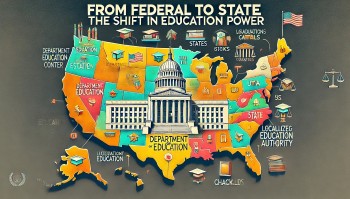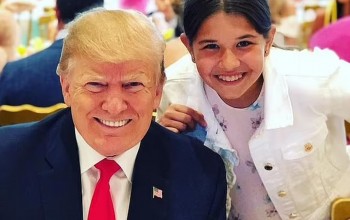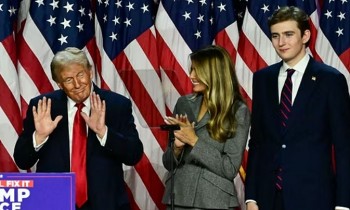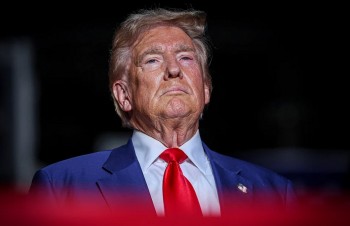Trump’s New Policies and Their Wide-Ranging Impact
As Donald Trump prepares to re-enter the White House in January 2025, his administration’s new policies are poised to create significant changes across various sectors of American society. From education to healthcare, immigration to the economy, and energy to foreign relations, Trump’s agenda reflects a strong focus on deregulation, decentralization, and prioritizing American interests. While these policies aim to stimulate growth and empower states, they also spark debates over potential disparities and long-term consequences.
 |
| Trump’s New Policies |
1. Education: Decentralization and School Choice
Key Policies
- Abolishing the Department of Education: Trump has called for dismantling the federal Department of Education, transferring authority to state governments.
- Expanding School Choice: His administration plans to redirect federal funding to school choice programs, including vouchers for private and charter schools.
Impacts
-
Benefits:
- States gain control over educational priorities, potentially leading to tailored solutions for local communities.
- Increased competition among schools may improve education quality.
- More options for families to choose schools that align with their values or offer better opportunities.
-
Challenges:
- Reduced federal oversight could exacerbate disparities between wealthy and underfunded states.
- Public schools may lose funding, negatively impacting underserved communities.
- Variability in education standards could lead to inconsistent academic outcomes.
Adaptation Strategies
- Encourage local governments to prioritize equitable funding for public schools.
- Invest in teacher training and resources to maintain education quality amid decentralization.
- Advocate for policies ensuring that all students, regardless of socioeconomic status, benefit from school choice programs.
 What Trump’s Education Policies Mean for You What Trump’s Education Policies Mean for You |
2. Healthcare: Deregulation and Market-Driven Solutions
Key Policies
- Repealing ACA Provisions: Trump plans to eliminate key components of the Affordable Care Act (ACA), reducing federal mandates on insurance.
- Medicaid Block Grants: Federal Medicaid funding would shift to fixed block grants, giving states greater autonomy but limiting resources.
- Short-Term and Association Health Plans: Emphasizing deregulated, lower-cost plans tailored to individual needs.
Impacts
-
Benefits:
- Lower premiums for young, healthy individuals who prefer minimal coverage.
- Increased flexibility for insurers and consumers to customize plans.
- Potential cost savings through competition and innovation.
-
Challenges:
- Higher costs for individuals with pre-existing conditions or chronic illnesses.
- Limited coverage options under deregulated plans.
- Reduced access to care for low-income individuals due to Medicaid funding cuts.
Adaptation Strategies
- Promote Health Savings Accounts (HSAs) to offset out-of-pocket expenses.
- Support state-led initiatives to maintain essential health benefits for vulnerable populations.
- Encourage hospitals and clinics to innovate through telemedicine and community outreach programs.
 Trump’s Healthcare Deregulation: Impact and Implications Trump’s Healthcare Deregulation: Impact and Implications |
3. Immigration: Strengthened Border Security
Key Policies
- Border Wall Expansion: Completing additional sections of the U.S.-Mexico border wall.
- Stricter Visa Policies: Tightening regulations on work and student visas.
- Deportation Priorities: Expanding criteria for deporting undocumented immigrants.
Impacts
-
Benefits:
- Reduced illegal immigration and enhanced national security.
- Greater control over visa systems to prioritize skilled workers.
- Potential relief for public resources by limiting unauthorized access.
-
Challenges:
- Workforce shortages in industries reliant on immigrant labor, such as agriculture and construction.
- Increased fear and uncertainty among immigrant communities.
- Strained diplomatic relations with neighboring countries.
Adaptation Strategies
- Develop guest worker programs to address labor shortages while maintaining security.
- Provide legal pathways for skilled immigrants to contribute to the economy.
- Invest in community programs that promote integration and support for documented immigrants.
4. Economy: Deregulation and Tax Reforms
Key Policies
- Corporate Tax Cuts: Further reducing corporate tax rates to stimulate business growth.
- Simplifying the Tax Code: Streamlining tax brackets and eliminating some deductions.
- Deregulation: Reducing regulations in industries like finance, energy, and manufacturing.
Impacts
-
Benefits:
- Businesses gain more capital to reinvest in growth and innovation.
- Increased economic activity and job creation in deregulated industries.
- Simpler tax codes reduce compliance burdens for individuals and companies.
-
Challenges:
- Short-term increases in the federal deficit due to reduced tax revenue.
- Potential for environmental and consumer protection rollbacks in deregulated sectors.
- Wealth disparities may widen as tax cuts benefit higher-income groups disproportionately.
Adaptation Strategies
- Encourage responsible corporate practices to balance growth with environmental and social accountability.
- Advocate for targeted tax incentives that benefit middle-income families.
- Invest in workforce development programs to prepare for job shifts in growing industries.
5. Energy: Fossil Fuels and Independence
Donald Trump’s energy policies, rooted in the themes of deregulation, fossil fuel revitalization, and energy independence, are designed to prioritize domestic production and reduce reliance on foreign energy. These policies have far-reaching implications for the environment, the economy, and global energy markets. Below is a detailed look at how Trump’s policies impact the energy sector.
Key Policies
- Support for Fossil Fuels: Reviving coal, oil, and natural gas industries through deregulation.
- Withdrawal from Global Climate Agreements: Reducing commitments to international climate goals in favor of domestic energy independence.
- Investment in Infrastructure: Expanding pipelines and other energy infrastructure projects.
Impacts
-
Benefits:
- Job creation in energy extraction and infrastructure development.
- Lower energy costs for consumers and businesses.
- Reduced reliance on foreign energy sources, enhancing national security.
-
Challenges:
- Environmental degradation from increased fossil fuel use.
- Global criticism for withdrawing from climate commitments.
- Slowdown in renewable energy adoption.
Adaptation Strategies
- Invest in technologies that reduce emissions from fossil fuels.
- Encourage states and private sectors to advance renewable energy initiatives.
- Balance short-term energy independence with long-term sustainability goals.
Trump’s energy policies emphasize economic growth and energy independence through a focus on fossil fuels and deregulation. While these policies offer short-term benefits such as job creation and reduced energy costs, they also raise environmental and global competitiveness concerns. Striking a balance between leveraging domestic resources and transitioning to sustainable energy solutions will be crucial for ensuring long-term energy security and environmental health.
6. Foreign Policy: The “America First” Approach
Key Policies
- Reducing Multilateral Commitments: Scaling back involvement in international alliances and organizations.
- Bilateral Trade Deals: Pursuing trade agreements with individual countries rather than multinational pacts.
- Military Strength: Increasing defense spending to enhance military readiness.
Impacts
-
Benefits:
- Greater control over trade terms and reduced reliance on global institutions.
- Strengthened military deterrence capabilities.
- Increased focus on national interests.
-
Challenges:
- Risk of diplomatic isolation and weakened alliances.
- Potential for trade disputes that disrupt global markets.
- Loss of influence in addressing global challenges like climate change and pandemics.
Adaptation Strategies
- Engage in strategic alliances that balance national interests with global cooperation.
- Diversify trade relationships to minimize risks of economic disruption.
- Strengthen diplomatic channels to maintain influence on global issues.
7. Social Policies: Cultural Conservatism
Key Policies
- Gender Policies in Sports and Education: Restricting transgender athletes from participating in women’s sports.
- Abortion Restrictions: Tightening regulations and reducing federal funding for abortion services.
Impacts
-
Benefits:
- Reinforces traditional values and aligns policies with conservative beliefs.
- Ensures fairness in women’s sports competitions.
-
Challenges:
- Sparks national debates over civil rights and inclusivity.
- Restricts access to reproductive healthcare for women, particularly in low-income areas.
Adaptation Strategies
- Support civil discussions to balance differing views on contentious issues.
- Advocate for state-level policies that address specific community needs.
- Promote education and awareness campaigns to bridge divides.
Conclusion
Donald Trump’s return to the White House brings a wave of policy changes aimed at reshaping the American landscape. While these policies offer opportunities for growth, empowerment, and innovation, they also pose challenges that require careful navigation. From education to healthcare, energy to foreign policy, and social values to economic growth, the impacts will be felt across every sector.
Adapting to these changes will demand proactive strategies from individuals, businesses, and governments. By fostering collaboration, prioritizing equity, and balancing short-term gains with long-term goals, Americans can work toward a future that leverages the best aspects of these policies while addressing their potential drawbacks.
 Who is Kai Trump, Donald Trump's Eldest Grandchild: Biography, Family, Social Networks and Achievements Who is Kai Trump, Donald Trump's Eldest Grandchild: Biography, Family, Social Networks and Achievements People already love and talk a lot about Kai Madison Trump, the cute, beautiful, and charming granddaughter of Donald Trump, the 45th President of the ... |
 Who Is Barron Trump: Early Life, Education, And Political Path Who Is Barron Trump: Early Life, Education, And Political Path Following in the footsteps of his father, the 47th President Donald Trump, Barron Trump is entering politics. To learn more about Trump's youngest son, read ... |
 Who Will Be Trump 2.0's New Cabinet Members? Here is the Full List of Contenders (Update) Who Will Be Trump 2.0's New Cabinet Members? Here is the Full List of Contenders (Update) KnowInsiders has identified almost 20 possible candidates for new roles in Trump 2.0's new Cabinet, in addition to White House Chief of Staff Susie Wiles, ... |
























